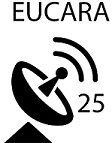Professor Dame Jocelyn Bell Burnell FRS
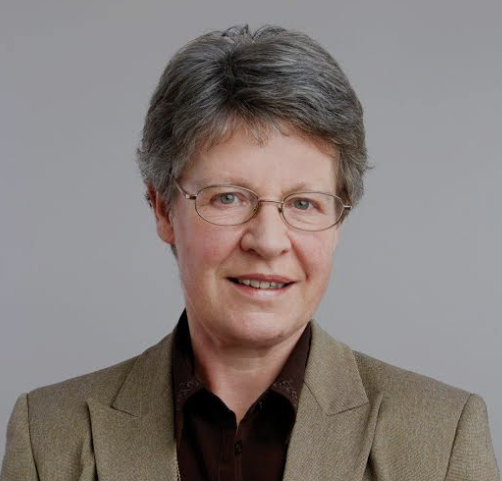
Jocelyn Bell Burnell DBE, FRS is an astrophysicist. She was responsible for the discovery of pulsars while a radio astronomy graduate student in Cambridge and has subsequently worked in gamma ray, X-ray, infrared and millimetre wavelength astronomy. She currently holds a Professorial Fellowship in Mansfield College, University of Oxford, and is a Visiting Academic in the University’s Department of Physics
She was awarded the Michael Faraday Prize (2010) and a Royal Medal (2015) by the Royal Society and also holds major awards from French, Spanish and USA bodies. A member of 7 Academies worldwide, she was the first female President of the Royal Society of Edinburgh (as well as of the Institute of Physics).
She is currently Chancellor of the University of Dundee and was previously a Pro Vice Chancellor of Trinity College Dublin. She holds numerous Honorary Doctorate
Barbara Cabrales
Jodrell Bank Centre for Astrophysics, Manchester University.
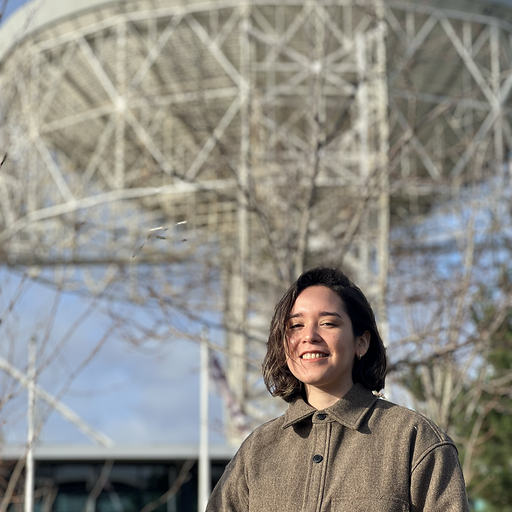
Bárbara Cabrales was born and raised in Santiago, Chile. In 2018, she moved to Northampton, Massachusetts in the United States to pursue a double bachelor’s degree in physics and astronomy at Smith College. Since 2021, she has worked with the Breakthrough Listen initiative in the Search for Extraterrestrial Intelligence (SETI). In 2024, she worked as a radio telescope operator and researcher using the Allen Telescope Array (ATA) at the Hat Creek Radio Observatory (HCRO) in Hat Creek, California, a facility dedicated to SETI searches, as well as the study of transients such as pulsars and FRBs. In the autumn of 2024, she moved to Manchester, UK to begin her PhD programme in radio astronomy, machine learning and SETI at the Jodrell Bank Centre for Astrophysics, University of Manchester.
The search for extra-terrestrial intelligence (SETI) using Radio Telescopes
Abstract:
With the birth of radio astronomy, scientists inspired by the idea of technologically capable life beyond Earth hoped a radio telescope might be able to pick up an alien radio signal. Looking for these signals, however, has proven to be a harder task than the pioneers of SETI hoped for: 6 decades later we have only negative results. The parameter space for how and where to look is multidimensional and reducing it calls for educated assumptions, which are often constrained by the capabilities of our instruments. Additionally, we live in an increasingly radio-contaminated environment and picking up such a beacon is as big of a challenge as properly identifying it. How do we filter radio frequency interference? What do we choose to look for? And how can we leverage the features of groundbreaking radio telescopes and novel techniques to aid in the search for intelligent life?
Brian Coleman – UK Meteor Radio Beacon Project Lead
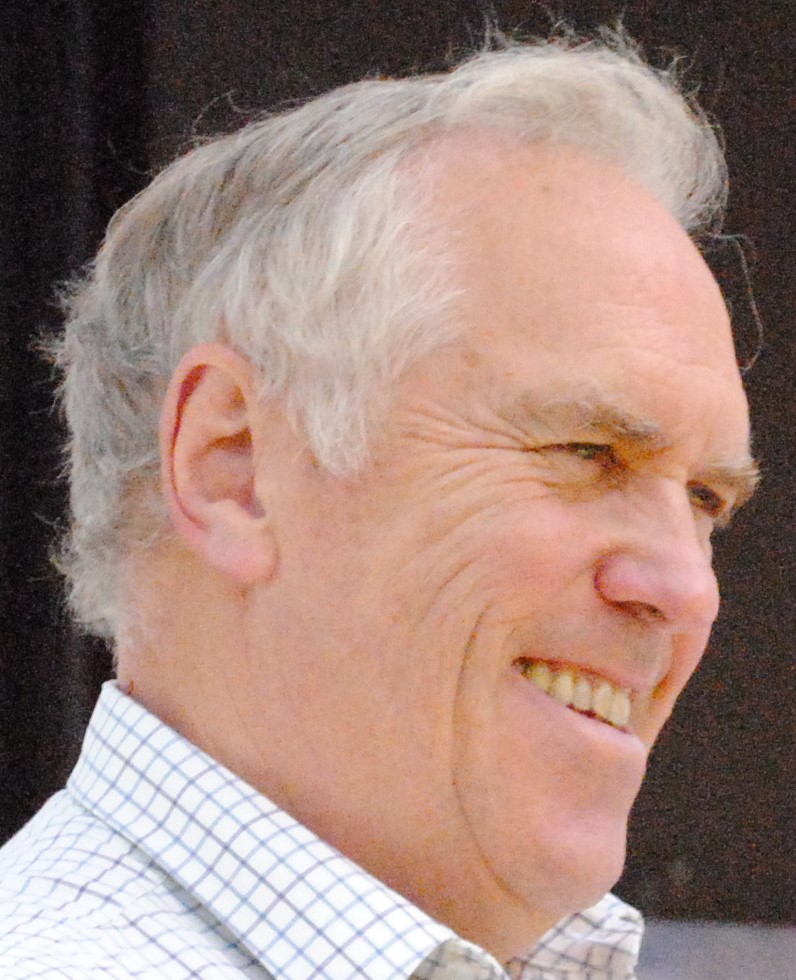
In addition to a fascination with astronomy Brian obtained his first amateur radio licence in 1967. Always interested in the technical challenges of designing and building radio equipment particularly for the higher frequency bands, VHF, UHF and Microwave this led to the challenge of Earth – Moon – Earth communications ( EME ) where the moon is used as a reflector to extend range beyond the horizon for frequencies not refracted or reflected by the ionosphere. After a career in the electronics industry the two interests, Radio and Astronomy inevitably came together. After completing the Introduction to Radio Astronomy course run by the University of Manchester Brian used his 3.7m EME antenna to study the radiation from Neutral Hydrogen in our Galaxy. The Hydrogen Line Observing Group was established giving its members the opportunity to make their own observations controlling Brian’s telescope remotely. Recently, with support from the RSGB and the BAA Brian has led a group of volunteers who are building a bi-static radar system to study meteors entering the earth’s atmosphere over the UK
The UK Meteor Radar Project has been established and run by a group of skilled volunteers from the amateur radio and radio astronomy fields. These volunteers bring the specialist skills required to design, build and run both the radio beacon and the receiver network.
The aim of the project is to provide an extensive and capable resource to the science and STEM communities to enable the study of meteors over the UK, although coverage further afield is possible but not currently covered by the receiver network.
This is an extensive project that has only been made possible by the generosity of both the dedicated design team and a number of external organisations. This resource is planned to be provided without charge to all those who wish to use it and hence the donation of time, funds and equipment has been essential to realise this ambition. We would like to thank those who have already supported us and would of course welcome any addition support.
Web site: https://ukmeteorbeacon.org/Home
Peter East OBE FREng
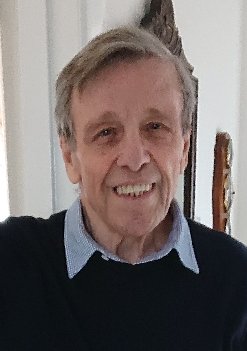
Peter East is retired from a Defence Electronics career in radar and electronic warfare system design. A member of the BAA since 1975, he has a book published on ‘Microwave System Design Tools’. He has had a lifelong interest in radio astronomy; presently active in amateur detection of pulsars using SDRs and has recently compiled an ebook on this work, ‘Galactic Hydrogen and Pulsars – an Amateurs Radio Astronomy’. He maintains an active Radio Astronomy website at http://www.y1pwe.co.uk
How to Catch a Pulsar
The strongest pulsar in the northern hemisphere is B0329+54. The main pulsar characteristics are very accurate pulse timing and broadband noise transmission; the energy scintillates and is dispersed in frequency. Pulsars are one of the weakest radio sources but their published characteristics are freely available to aid amateur search. Pulse period-matched integration is the most effective technique to recover a pulsar from galactic and receiver noise plus possibly some minor local interference. There is good availability of hardware to construct a backyard radio telescope and free software to collect and process the data. There is still scope for amateurs to further process the data to better confirm detection; a technique investigated here, exploits the random scintillation property to improve signal confidence.
Hermann Fenger-Vegeler

Born in 1954 and raised in Duesseldorf, Germany, he studied physics at Bielefeld University from 1975 onwards. After graduating with a degree in physics, he joined the emerging software industry, working in the warehouse control systems sector until his retirement in 2021. From a young age, he was passionate about astronomy and spaceflights and remained committed to astronomy throughout his working life, conducting studies in the field of asteroids, variable stars, and comets. Only later, and actively since EUCARA 2018, did he turn to radio astronomy. Fortunately, he was able to start as a guest at Per Dudek’s station in Kiel, conducting HI measurements at 1420 MHz and pulsar observations at 1310 MHz with the 9 m dish. His work, which he will report on at EUCARA 2025, was also kindly supported by Per Dudek and his team. It is a huge challenge to get involved in this topic as an amateur and so his motto is a variation of what started it all for him : ‘It’s a small step for menkind but a giant leap for me !’
Pulsar Observations using the 9m-Dish in Kiel-Rönne
Longterm observation of PSR B029+54 – first results and outlook
- Brief overview of the Radiostation Kiel-Rönne and the 9m-dish system
- Pulsar observations over the last 2 years
- The longterm observation program of PSR B0329+54
- Motivation
- First results – Roemer-Delay and some further astrometical remarks
- outlook
Abstract
The Kiel-Roenne amateur radio station has been known for some time, particularly for the EME – beacon in the 10 and 24 GHz range. This versatile facility is also used as a ground station for NASA in cooperation with the University of Kiel. Satellite observations and radio astronomy have been carried out there for more than 20 years. Initially, HI observations were done but pulsar observations at 1310 MHz were later added. After an interruption at the end of 2016, these observations resumed in 2021, this time with purely digital signal processing and evaluation. After some initial difficulties, pulsars have been received again since mid-2023. The results of these measurements and a system overview will be presented here. The ongoing long-term observation of PSR-B0329+54 will also be reported. This includes motivation, first results, and further planning.
Dr. Wolfgang Herrmann – Director of The Astropeiler Stockert Observatory
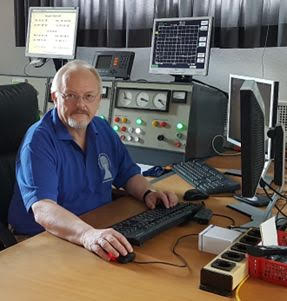
Dr. Wolfgang Herrmann is a physicist having received his Diploma and the Ph.D from the university of Bonn. He has spent most part of his professional career in the telecommunication industry. Since retirement, he is engaged at the Astropeiler Stockert e.V., a volunteer organization operating and maintaining the Astropeiler observatory. He is now heading the organization.
His scientific focus is on FRB, Pulsar and Maser observations. He is also engaged in the education of students by conducting lab courses and supervising Bachelor and Master degree thesis work.
Water maser observations at 22 GHz
Water is one of the molecules which can form natural masers in a astrophysical environment. Masers can be found in regions with intense infrared radiation such as star forming regions or around giant stars. Water masers are particularly interesting as they can be very variable and sometimes exhibit very strong flares.
The talk will report on the observations conducted in since 2024 (and some earlier observations) with the 10-m dish at Astropeiler Stockert. The instrumentation used will be explained covering the frontend design and the SDR backends. The spectra recorded cover W3, W49, W51, Centaurus A, Cygnus X and Orion KL with focus on the variability.
Professor Ian McCrea – RAL Head of Space Physics
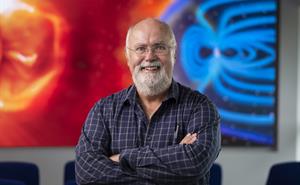
In 2013, Ian became Deputy Head of the Space Physics Division and when the division was amalgamated with the former Space Data Division in 2015, he took over as head of the resulting new Space Physics and Operations Division.
Ian’s research background is in ionospheric physics, with his PhD (University of Leicester, 1989) focusing on energy deposition and dissipation in the Earth’s upper atmosphere. He joined RAL in 1991 and became head of its UK EISCAT Support Group in 1996, establishing a long heritage as a support scientist for ground-based instruments. He continues to work with the EISCAT Scientific Association and has chaired both its Council and Scientific Advisory Committee.
He is currently a member of the Natural Environment Research Council peer review college and the science strategy board for the National Centre for Atmospheric Science. In addition to upper atmosphere physics he has strong interests in space weather and in the radar tracking of space debris.
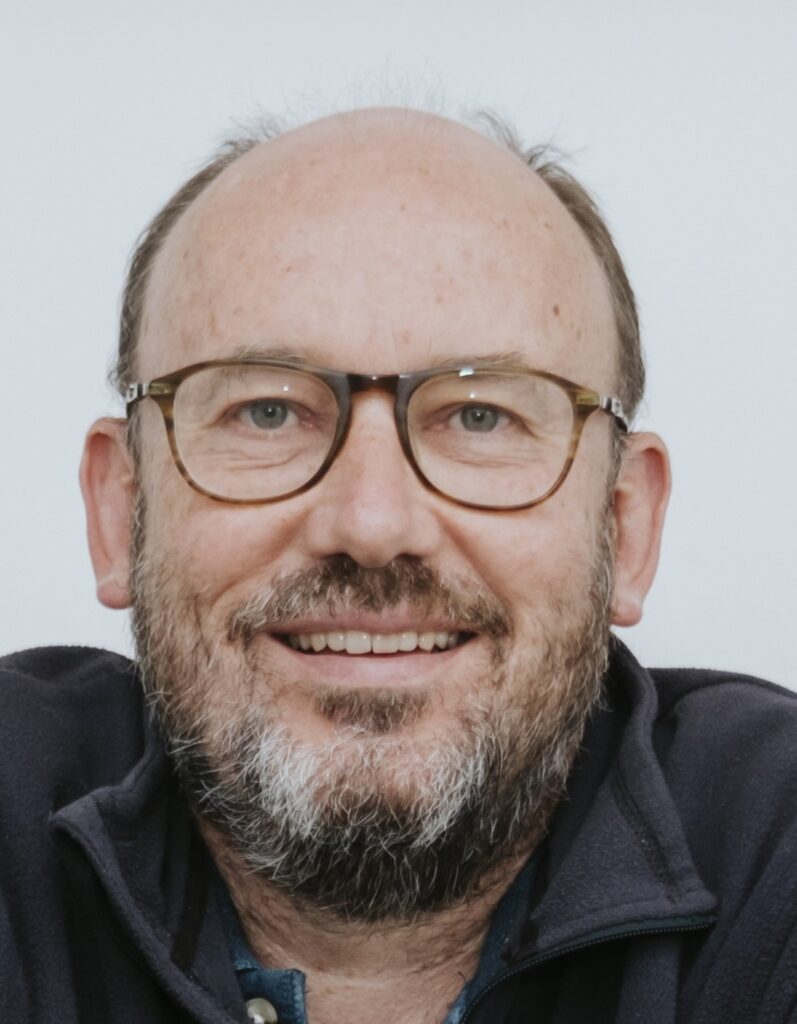
Bio
Stephen Mullaly was born and raised in Sydney, Australia and has lived in the UK for over 25 years. He has worked in professional publishing for over 30 years for several academic publishers in the UK in Editorial and Commissioning roles. He has a longstanding interest in the history of Astronomy and over the last ten years has focused on the history of Radio Astronomy, searching national archives, reading every book he can find on the subject and visiting sites in the UK, Germany and Australia. He is married with two children and is a member of Newbury Astronomy Society.
Abstract
Radar and the Birth of Radio Astronomy This talk will look at the origins of Radio Astronomy, focusing on the development of Radar in the 1930s, the use of Radar in WWII and the subsequent discovery of “cosmic noise” which opened up the electromagnetic spectrum to Astronomers in a way unprecedented since Galileo and the telescope. It will include discussion of key events of WWII including the Battle of Britain, the Tizard Mission and the Bruneval Raid – and how captured German and Japanese Radars became the first Radiotelecopes. It will examine how wartime Radar personnel at TRE in the UK and CSIRO Radiophysics in Australia “accidentally” became the first Radio Astronomers – people such as Bernard Lovell (Manchester), Martin Ryle (Cambridge) and Joe Pawsey (Sydney). It will describe the growth of Radio Astronomy up to the 1960s in the context of key discoveries including quasars, pulsars and Cosmic Microwave Background – discoveries which transformed our knowledge of the universe and gave evidence for the Big Bang and the existence of Black Holes. The aim of the talk is to put Radio Astronomy into an historical context as part of the evolution of “big science” in the second half of the Twentieth Century and examine how conflict between the key Radio Astronomy groups in the 1950s led to the growth of a major new branch of Astronomy. The talk will finish with a brief look on the future of Radio Astronomy through multinational projects such as the SKA and Event Horizon Telescope.
Mario Armando Natali
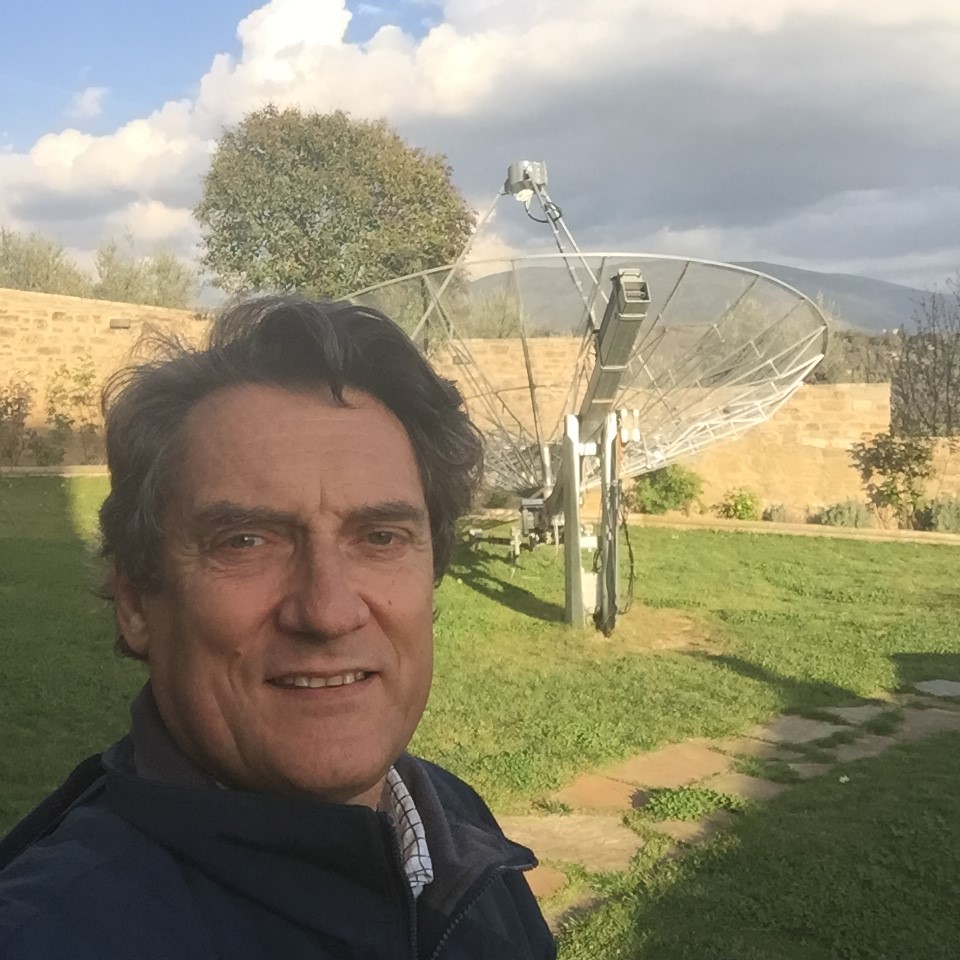
MURMUR: A Predictive Tool for Pulsar Detectability
MURMUR is a Windows-based software application initially released in 2016, designed to assess the likelihood of pulsar detection by analysing the parameters of a receiving station. Over time, the program has evolved to incorporate a wide range of additional features. These include solar noise prediction using data from NOAA solar observatories, estimation of noise levels from major cosmic sources, observation planning tools, object tracking capabilities, signal plotting, and various other utilities aimed at optimizing the performance of the receiving system
BIO
Mario Armando Natali was born in Italy in 1951 and developed a strong interest in electronics and engineering from an early age. He earned a degree in Electronic Engineering from the University of Bologna (UNIBO).
Following his graduation, he pursued a career in the semiconductor industry, where he spent his entire professional life in both technical and managerial roles across various regions of the world.
Alongside his professional endeavours, he is an enthusiastic amateur radio operator. In 2015, he installed a 5-meter parabolic antenna, now fully dedicated to Earth-Moon-Earth (EME) communications and radio astronomy, with a particular focus on the study of pulsars.
He has published numerous articles on radio and related technologies, including a contribution to the 2025 edition of the ARRL Antenna Book, where he introduces readers to radio astronomy. He also develops free software to support the amateur radio and amateur radio astronomy communities.

Dr Chris Pearson RAL Space Astronomy Group leader
SKA Science Data Processor Team.
Title: The Square Kilometre Array: Big Data and Transformational Science
Synopsis: The Square Kilometre Array (SKA) will become the next generation radio telescope for astronomy. The SKA observatory comprises of two telescope arrays across three continents and when finished in 2029 will be the largest scientific facility in the history of humankind. The SKA will address and answer key scientific questions, ranging from the origins of the structure we see in our Universe today to the cradle and origins of life. Such a large facility will naturally create vast amounts of data, around 10 million Gigabytes per hour of operation, that raises new challenges in engineering and computing. This talk will give an overview into the engineering and computational challenges that need to be met and the transformational science the SKA will deliver.
Bio:
Dr Chris Pearson is head of the Astrophysics programme at RAL Space. His PhD was in “Galaxy Evolution and Cosmology” with Prof. Michael Rowan-Robinson at Imperial College, London and has worked on large galaxy surveys for both ground based telescopes and space borne missions. He worked for 7 years in Japan on the AKARI space telescope before moving to the UK to RAL Space to work on the Herschel Space Observatory. He now works on the ARIEL mission searching for exoplanets and the Square Kilometre Array radio telescope, the largest scientific facility in the history of humankind.
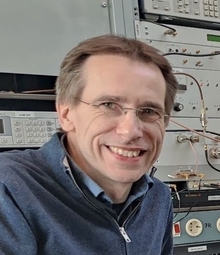
Thomas Telkamp – Radar astronomy
Bio:
Thomas Telkamp is an active volunteer at the historic Dwingeloo Radio Telescope in the Netherlands. There, he contributes to various radio astronomy and deep space communication projects. Recent highlights include the measurement of several Radio Recombination Lines, the reception of Voyager 1, and receiving an echo from Venus. All software developed and data collected in these projects is openly available to the public. Thomas is also co-founder of Lacuna Space, a new-space company pioneering global Internet of Things (IoT) connectivity via satellite. Headquartered at the Harwell Campus in Oxfordshire, Lacuna Space aims to enable IoT access anywhere on Earth. After serving as Chief Technology Officer for several years, Thomas now leads the company’s research and development efforts, with a focus on advanced RF modulation techniques and on-board signal processing.
Abstract:
Restored in 2012 with the help of radio amateurs, the Dwingeloo Radio Telescope not only regained its ability to receive signals from space but also acquired transmit capability. This new functionality is frequently used by amateur radio operators for moonbounce communication (Earth-Moon-Earth, or EME). It also enables active radar observations of nearby celestial bodies by reflecting radio waves off their surfaces, opening the door to experiments in planetary radar astronomy.
In this presentation, we will discuss ongoing radar experiments targeting the Moon and Venus, detailing the technical setup, signal characteristics, and processing techniques such as Delay-Doppler mapping. We will also share results from bi-static lunar radar experiments, carried out in collaboration between Dwingeloo and the Astropeiler Stockert radio telescope in Germany.
Dr Andrew Thornett
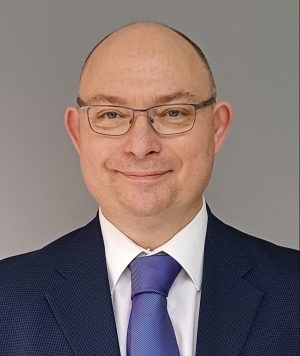
3D and 4D mapping of the Milky Way, using data from Lichfield Radio Observatory (LRO), central UK, collected by two radio telescopes, an ex-military dipole array and a parabolic solar cooker.
Measuring hydrogen line (1420.405MHz) in the Milky Way is a common project for amateur radio astronomers. Such measurements can be used to map the galactic arms of the Milky Way, measure our galaxy’s mass, and demonstrate the presence of dark matter in the galaxy.
Methods of displaying the data obtained from such projects has been limited to graphical plots of data and 2 dimensional maps of the galaxy. These are often difficult for members of the general public to properly appreciate, which makes their use in outreach of limited value.
There are now new ways of presenting our findings which can provide greater appeal to those who are not well versed in radio astronomy methods and interpretations.
This talk explores these new methods, including displaying the data in three spatial dimensions, using free software packages such as Easy Radio Astronomy Software and Rinearn 3D. In addition, these programmes can be used to map the data to a sphere in order to give views of the Milky Way as it would be seen from the surface of the Earth or from outside a ball surrounding the Earth.
The methods are used to display data collected at Lichfield Radio Observatory (LRO) in central United Kingdom, from its three hydrogen line radio telescopes, LRO-H1, based on an ex-military dipole array 86cm x 86cm in size, LRO-H2, built around an 150cm diameter parabolic reflector originally designed to act as a solar cooker, and LRO-H3, which uses as its aerial a 13-element Patch Yagi.
Bio
Dr Andrew Thornett is a General Medical Practitioner in Birmingham with an eclectic interest and passion for all things astronomy. He is a member of the BAA Radio Astronomy Group and Society of Amateur Radio Astronomers in the USA, and of Rosliston Astronomy Group in Derbyshire, and the Astronomical Society of Penang in Malaysia.
He has special intersts in radio astronomy and solar astronomy – he considers himself to be one of a new breed of radio astronomer who don’t understand half of what is going on but finds that modern technology and software allows him to get it working and to achieve amazing things! He then spends his time learning as much as he can and he is keen to encourage other people to consider this part of the hobby.
From the solar perspective, using his Daystar Quark Filters, he loves to photograph the Sun and produce solar animations, and he has recently acquired a spectrohelioscope and is amazed by what this technology can offer amateurs, especially as it can be largely 3D-printed at home!!
His message: You can do it and you can do it even with loads of cloud and light pollution from your suburban or urban home, with minimal knowledge and for reasonable cost! You just need the passion!
Workshop Title: Exploring the NanoVNA – A Beginner’s Guide to Optimising Radio Telescopes.
Andrew Thornett and Jason Burnfield.
Abstract:
This one-hour introductory workshop is designed for amateur astronomers interested in practically using the NanoVNA (Vector Network Analyzer) to analyse and enhance radio telescope systems, but who find it difficult to understand all the theory and electronics. Participants will learn how to use this powerful, affordable tool to measure antenna impedance, match feedlines, diagnose signal path losses, and optimize overall system performance at radio astronomy frequencies, including the hydrogen line at 1420 MHz. The session will include a practical demonstration, including a guide to making a shortened antenna far-field, testing range, guidance on interpreting key plots (such as S11 and Smith charts), and tips for real-world use in low-noise observational setups. No prior experience with VNAs is required—just a passion for refining your radio astronomy equipment.
